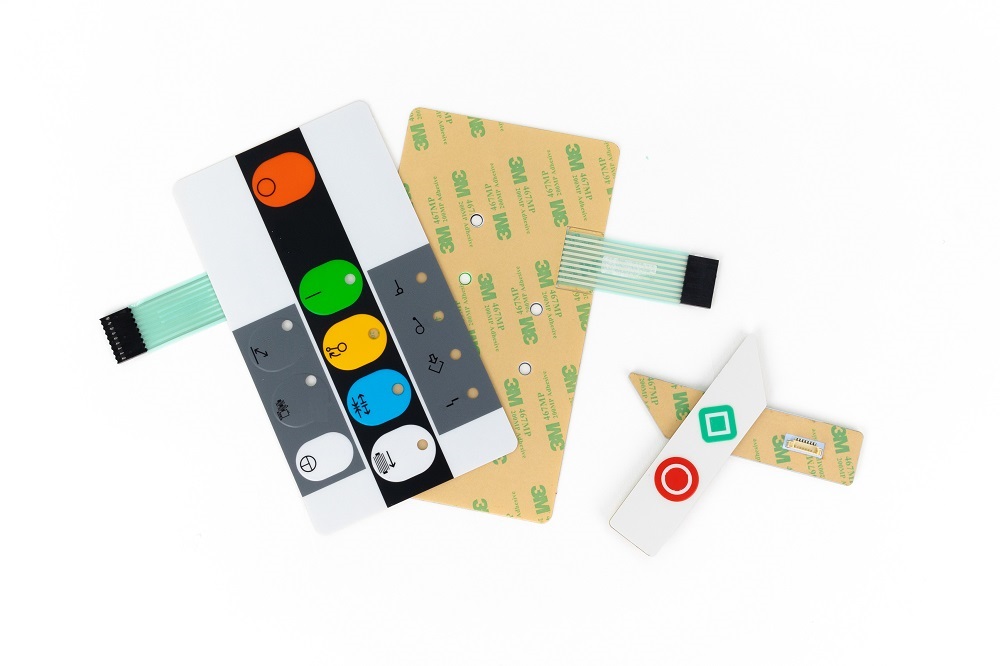Membrane Switch: A Comprehensive Guide to Its Uses and Applications
Membrane Switch: A Comprehensive Guide to Its Uses and Applications
Blog Article
Understanding Membrane Layer Changes: The Trick to Trusted and long lasting Controls

What Are Membrane Layer Buttons?
Membrane switches are an advanced remedy in the world of interface technology, integrating capability and layout seamlessly. These devices serve as an interface between individuals and digital systems, incorporating numerous parts right into a portable layout. Commonly constructed from flexible, thin layers of products, membrane layer buttons are designed to reply to touch, enabling users to connect with equipment and digital gadgets properly.
The key components of a membrane layer button consist of a printed circuit layer, graphic overlay, and a spacer layer that avoids unintentional activation. The visuals overlay can be personalized to show brand identity or customer choices, enhancing looks while making sure functionality. Membrane switches are generally utilized in various applications, consisting of clinical devices, consumer electronic devices, and commercial tools, owing to their resilience and resistance to ecological variables such as wetness and dust.
Among the key advantages of membrane layer switches is their ability to hold up against deterioration, making them optimal for high-traffic atmospheres. Furthermore, they are lightweight and need minimal room, enabling for innovative designs in item advancement. Overall, membrane layer switches stand for a sensible and reliable option for modern electronic user interfaces, marrying modern technology with user-centric design concepts.
How Membrane Layer Switches Work
The operation of membrane layer switches joints on an easy yet reliable mechanism that translates customer input right into digital signals. These switches are composed of multiple layers, typically including a visuals overlay, a spacer layer, and a circuit layer. When an individual presses the button, the leading layer warps, permitting a conductive element in the circuit layer to make contact with a matching conductive pad on the bottom of the graphic overlay. This call shuts the circuit and sends an electronic signal to the tool, indicating that the button has been triggered.
The layout of membrane layer buttons can vary, but they often integrate domes or tactile aspects to offer comments to the user, boosting the overall experience - membrane switch. The materials used in membrane switches, such as polyester or polycarbonate, contribute to their toughness and resistance to environmental factors, including moisture and dust. The published circuits are commonly enveloped, which shields them from wear and tear over time.
Advantages of Membrane Layer Buttons

Furthermore, membrane buttons are understood for their sturdiness. Constructed from robust materials, they are immune to dust, dampness, and physical wear, which significantly extends their life expectancy compared to traditional mechanical buttons. This resilience makes them particularly ideal for high-traffic atmospheres and applications calling for have a peek here longevity.
Another considerable benefit is the ease of cleansing and maintenance. The smooth surface of membrane layer switches minimizes dust buildup and is usually unsusceptible spills, making them perfect for setups that call for constant sanitization.
In addition, membrane switches provide a structured profile, bring about a thinner style that can be incorporated into different devices without adding bulk. This attribute not just enhances the aesthetic appeal but also contributes to an extra ergonomic item layout.
Applications of Membrane Layer Switches
Functional and straightforward, membrane layer buttons find applications across a wide range of industries, including clinical devices, consumer electronics, and commercial tools. In the medical field, these switches are indispensable to gadgets such as analysis More Help equipment, client tracking systems, and infusion pumps, where reliability and ease of cleaning are important. Their ability to preserve and withstand extreme environments performance makes them suitable for such applications.

In customer electronic devices, membrane layer switches are made use of in products like microwaves, cleaning equipments, and remotes - membrane switch. Their smooth layout permits intuitive interface, enhancing the total individual experience while offering resilience and resistance to tear and use
Industrial devices additionally profits from membrane switches, particularly in control panels for equipment and automation systems. These buttons use protection versus dust and wetness, guaranteeing regular efficiency in tough settings. Additionally, their adjustable features enable suppliers to tailor them to particular operational demands, improving performance and functionality.
Picking the Right Membrane Layer Switch Over
When choosing a membrane layer switch, it is vital to take into consideration different factors that affect performance and suitability for specific applications. The main considerations include environmental problems, tactile comments, longevity, and design specifications.
First, analyze the operating atmosphere; switches revealed to dampness, chemicals, or extreme temperatures need particular products to make sure long life and capability. Next off, review the requirement for tactile comments. Depending on customer interaction, some applications might benefit from a helpful resources responsive feedback to confirm activation, while others might choose a non-tactile layout for aesthetic factors.
Durability is one more crucial variable; membrane switches should be created to stand up to frequent usage, impacts, and abrasion. Make sure the selected button can withstand the expected lifecycle, specifically in high-usage situations.

Conclusion
In verdict, membrane switches offer as vital components in the design of trustworthy and resilient control systems across numerous industries. The convenience of membrane switches allows for tailored options that fulfill specific functional requirements, strengthening their value in modern-day innovation.
Membrane layer switches represent a crucial aspect of contemporary interface style, mixing performance with strength in various applications.Membrane layer switches are a sophisticated remedy in the realm of individual interface modern technology, integrating capability and layout flawlessly. Commonly constructed from versatile, thin layers of materials, membrane layer switches are developed to react to touch, making it possible for customers to engage with machinery and digital devices effectively.
The layout of membrane layer buttons can vary, but they often include domes or responsive elements to give feedback to the customer, enhancing the total experience.In final thought, membrane switches offer as necessary components in the layout of trustworthy and durable control systems across various industries.
Report this page